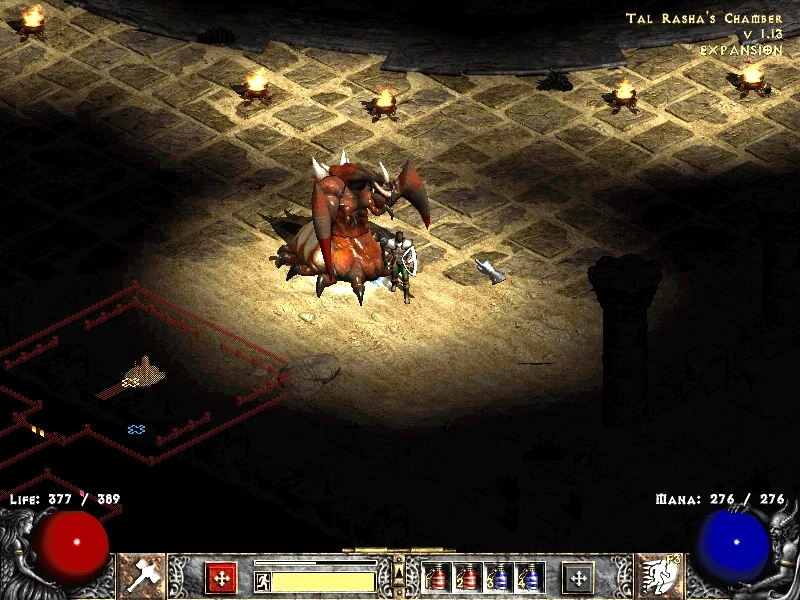
The Diablo was rear-wheel drive and the engine was mid-mounted to aid its weight balance. Its power came from a 5.7 L (348 cu in) dual overhead cam, 4 valves per cylinder version of the existing V12 engine and computer-controlled multi-point fuel injection, producing a maximum output of 492 PS (362 kW 485 hp) and 580 N⋅m (428 lbf⋅ft) of torque to reach a top speed of 325 km/h (202 mph). The Diablo was presented to the public for sale on 21 January 1990. Rear of the car showing the optional rear wing The development is believed to have cost a total of 6 billion Lire .

The Diablo was named after a ferocious bull raised by the Duke of Veragua in the 19th century, famous for fighting an epic battle with 'El Chicorro' in Madrid on 11 July 1869. The new car was named Diablo, carrying on Lamborghini's tradition of naming its cars after breeds of fighting bulls. In fact, Gandini was so disappointed with the "softened" shape that he would later realise his original design in the Cizeta-Moroder V16T. When Chrysler Corporation bought the company in 1987, funding the company to complete the car's development, its management was uncomfortable with Gandini's designs and commissioned its design team in Detroit to execute a third extensive redesign, smoothing out the infamous sharp edges and corners of Gandini's original design, and leaving him famously unimpressed.

The design of the car was contracted to Marcello Gandini, who had designed its two predecessors. The brief stated that the top speed of the new car had to be at least 315 km/h (196 mph). The Lamborghini P132 prototype designed by Marcello Gandini on display at the Lamborghini museum, a design which would later be used for the Cizeta-Moroder V16TĪt a time when the company was financed by the Swiss-based brothers Jean Claude and Patrick Mimran, Lamborghini began development of what was codenamed Project 132 in June 1985 as a replacement for the Countach, Lamborghini's then flagship sports car.


 0 kommentar(er)
0 kommentar(er)
